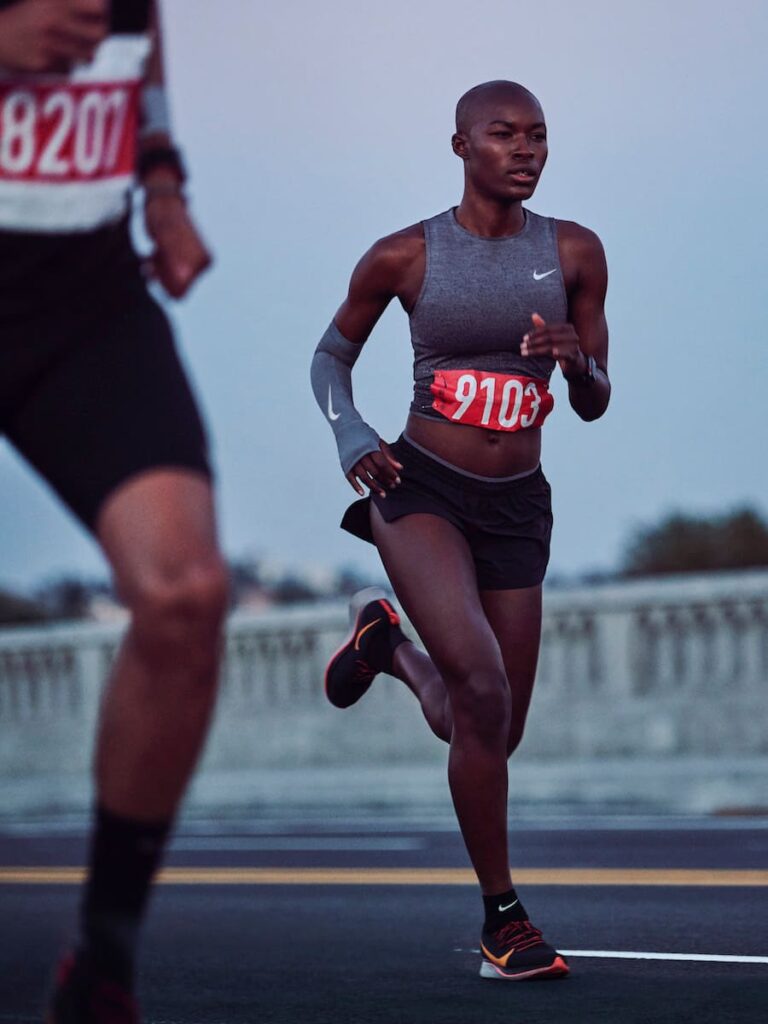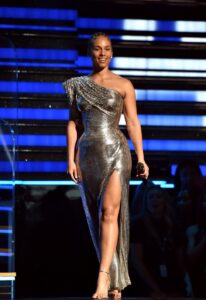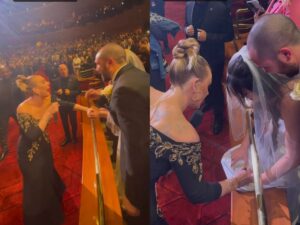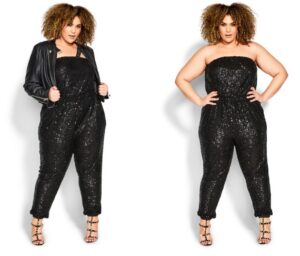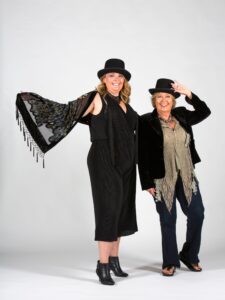For a marathon, wear clothing that is comfortable, fits well, and is suitable for the weather conditions. Running a marathon requires lots of physical and mental preparation, but choosing the right clothing can make a significant difference.
As a marathon runner, dressing appropriately will allow you to perform better and feel more comfortable during the race. When it comes to picking the right gear, there are a few things to take into consideration, including the weather conditions, the fit of the clothing, and the comfort levels.
In this article, we will be discussing what to wear for a marathon and why it’s essential to choose the right clothing. Let’s dive in and learn more!

Credit: www.adidas.com
Understanding The Importance Of Proper Running Apparel
The Role Of Clothing In Enhancing Marathon Performance
Wearing proper running apparel is a crucial part of marathon preparation. Proper attire can enhance your performance by providing support, comfort, and breathability. Below are some key points to keep in mind when choosing the right clothing for your marathon:
- Opt for moisture-wicking fabrics like polyester or nylon to keep you dry and comfortable during the race.
- Consider compression garments to improve blood flow and reduce muscle fatigue.
- Choose apparels that fit well but are not too tight or too loose, ensuring that you have full range of motion.
- Wear comfortable and well-cushioned shoes that support your feet and provide the right amount of shock absorption.
How Proper Apparel Choices Can Prevent Injuries
Wearing the right running apparel is not just about enhancing your performance but also preventing injuries. Here are some points to keep in mind when selecting the proper clothing:
- Avoid wearing cotton as it traps sweat and can lead to chafing and uncomfortable skin irritation.
- Make sure your clothing does not have any tags or seams that can rub against your skin and cause discomfort.
- Wear clothes that are reflective and brightly colored if running in the dark or low-light conditions.
- Invest in quality, moisture-wicking socks that will keep your feet dry and reduce the risk of blisters.
The Impact Of Temperature On Clothing Choices
Temperature plays a crucial role in determining the appropriate clothing for your marathon. Here are some tips to help you make the right clothing choices:
- Dress in layers to adjust to changing temperatures. Start with a sweat-wicking layer, followed by a warmer layer or jacket as necessary.
- If running in colder temperatures, consider wearing gloves, a hat, and a scarf to protect your extremities from the cold.
- On hot and humid days, choose lightweight, loose-fitting clothes that allow for maximum air circulation.
- Prioritize sunscreen and a hat to protect yourself from the sun and prevent heat exhaustion.
Choosing proper running attire is crucial for a successful marathon. Invest in quality, moisture-wicking fabrics that fit well and prioritize protection from the weather and potential injuries. With these tips in mind, you’ll be well on your way to running your best marathon!
Essentials For Marathon Clothing
When it comes to running a marathon, choosing the right clothing is just as important as training for it. The right clothing helps you perform better and feel more comfortable during the race. Here are some essentials to consider when picking marathon clothing.
Choosing The Right Running Shoes
Running shoes are the most important piece of equipment for any runner, and choosing the right pair is critical. Here are some things to consider when selecting running shoes:
- Choose shoes based on your foot type and running style
- Look for shoes with ample cushioning and support
- Make sure the shoes are the right size to avoid blisters
- Consider breaking in your shoes before the race
Selecting Moisture-Wicking Fabrics
Marathons can be sweaty affairs, and clothing that absorbs sweat can lead to discomfort and chafing. Moisture-wicking fabrics are designed to pull moisture away from your skin and keep you dry. Here are some things to look for when selecting moisture-wicking fabrics:
- Materials like polyester, nylon, and spandex are great moisture-wicking options
- Avoid cotton, which can become heavy and uncomfortable when wet
- Look for clothing with a breathable weave to keep you cool
Compression Apparel For Improved Blood Flow
Compression apparel is designed to improve blood flow and oxygen delivery to your muscles. This can lead to better performance and faster recovery times. Here are some things to consider when selecting compression apparel:
- Compression socks can help improve circulation in your legs
- Compression shorts or tights can provide support and enhance muscle activation
- Make sure the compression apparel is the right fit to avoid discomfort
Dressing In Layers For Changing Temperatures
Marathons often take place early in the morning, when temperatures can be cool, and warm up as the day progresses. Being able to dress in layers will help you stay comfortable throughout the race. Here are some things to consider when dressing in layers:
- Start with a moisture-wicking base layer to keep sweat away from your skin
- Add a lightweight insulating layer in cooler temperatures
- Wear a lightweight, breathable outer layer to protect against wind and rain
By considering these essentials for marathon clothing, you’ll be able to select the right gear for your race and perform at your best. Remember to practice running in your chosen clothing beforehand to ensure a comfortable and successful marathon.
Accessorizing For Optimal Performance
Marathons can be a grueling challenge, but it’s easier when you have the right accessories for optimal performance. Here are some suggestions for accessorizing:
Proper Headwear For Sun Protection And Comfort
Protecting your skin from the sun is crucial for outdoor running. Choose a hat with a brim wide enough to cover your face and neck, shielding you from the sun’s harmful rays. Also, make sure your headwear breathes well and wicks moisture to keep you cool and dry during the race.
Here are some recommended hats for marathon runners:
- Visors: These are ideal for sunny weather but might lead to sunburn on your forehead.
- Baseball caps: These are great for managing sun glare and come in handy for rainy days.
- Lightweight running caps: These are excellent for summer running since they protect you from the sun without overheating.
Selecting The Right Socks For Moisture Management
Good running socks are critical because they keep your feet dry and blister-free while you run. Make sure to select socks with moisture-wicking properties as they will help keep your feet dry throughout the marathon. Here are the main types of socks a marathon runner should consider:
- Synthetic socks: These socks blend fibers like nylon, acrylic, and polyester to wick moisture and prevent blisters.
- Wool socks: Wool socks are great for cold weather, as they keep feet warm.
- Cushioned socks: For runners who need extra cushioning and support while running.
The Role Of Sunglasses In Protecting Your Eyes
Sunglasses are as crucial as any other accessory for runners. They protect your eyes from the sun, dust, and debris, enhancing your performance. Here are some essential things to keep in mind when selecting running sunglasses:
- Look for lenses that block 100% of uv rays.
- Choose a wraparound frame to protect your eyes from all angles.
- Consider picking polarized lenses to reduce sun glare.
Minimalist Accessories To Prevent Interference With Your Performance
Less is more when it comes to race day accessories. Minimalist accessories prevent interference with your performance. Here are some recommendations for minimalist accessories:
- Running watches: Running watches come with gps and heart rate monitoring systems to help you track your progress. Always opt for lightweight options.
- Race bib holders: These help keep your race bib in place without causing discomfort or bouncing up and down.
- Sports armbands or waistbands: These keep your phone easily accessible without interfering with your performance.
Accessorizing for a marathon can make a big difference in your performance. Choose hats that protect you from the sun, socks that keep your feet dry, sunglasses that protect your eyes, and minimalist accessories that don’t interfere with your performance.
The Importance Of Fit
Completing a marathon can be tough, but it can be even more challenging if you don’t have the right gear. Each piece, from shoes to clothing, must fit correctly to maximize performance and minimize injuries. Here’s what to keep in mind when selecting your running gear.
How To Find The Perfect Fit For Your Running Shoes:
Running shoes are the most crucial component of your running gear. Fit, support, and cushioning are essential considerations when selecting a new pair. Here are a few ways to ensure that your shoes feel perfect:
-visit a specialty running store to have your feet measured by a shoe professional.
-consider your foot strike type and choose the appropriate shoe for your running form.
-ensure that there is enough space in the toe box to prevent blisters.
-test the shoes by running on different surfaces in the store.
Techniques For Finding Comfortable, Well-Fitting Clothing:
Running clothing should be comfortable, non-restrictive and made from moisture-wicking materials. Here’s how to choose the best gear:
-select lightweight, breathable materials that don’t trap sweat.
-choose clothing that allows for airflow.
-consider purchasing clothes designed for running to ensure optimum comfort.
-try on the clothing before purchasing, and make sure to move around to test its fit quality.
Ensuring Clothing Does Not Restrict Movement:
Running gear should allow for maximum movement, enabling you to complete your training without being held back. Here’s what to keep in mind to avoid restrictions:
-ensure that your clothing is not too tight, but still, fit snugly to your body.
-consider clothing that has stretch and flex properties.
-choose clothing that is designed for movement.
-do a trial run in your clothing before the big race to make sure there are no surprises.
Remember, the perfect fit for running gear is critical for success in marathons. Keep in mind the factors discussed above, and you’ll have a comfortable and enjoyable race day.
Preparing For Unpredictable Weather
Weather is one of the most unpredictable factors during a marathon. At the start of the race, it may be chilly, with the sun shining, while it can rain heavily and become humid as the day progresses. For any marathon participant, it’s crucial to prepare for such unpredictable weather conditions.
Here are some tips that can help you:
Planning For Adverse Weather Conditions
- Study the weather forecast a few days before the race to plan accordingly.
- Pack alternative clothes and weather-resistant gear.
- Always bring waterproof bags to pack your belongings and keep them dry in case it rains.
- Make sure to bring extra layers to stay warm in cold conditions.
- Stay updated with the race officials about any weather updates.
Appropriate Apparel For Rainy And Cold Conditions
The right apparel for different weather conditions ensures that you remain comfortable and avoid any unpleasant distractions during the marathon. Here are a few tips:
- For rainy weather, wear clothes that are light and dry quickly. Rain jackets or vests are a good option to repel the moisture.
- Wear thermal wear or compression leggings under your shorts to keep your legs warm during cold weather conditions.
- Avoid cotton clothes as they tend to retain moisture and stay wet for longer periods.
- Wear shoes with good grip to avoid slipping or sliding during rainy weather conditions.
The Benefits Of Hats And Gloves
Hats and gloves are essential gear that can help you stay comfortable during a marathon, especially when the weather conditions become unfavorable. Here are some benefits of wearing hats and gloves:
- Hats can keep your head warm during cold weather conditions and protect it from the sun during sunny weather.
- Gloves can protect your hands from chaffing during the race and keep them warm during cold weather conditions.
- They can also help you avoid any distractions that are caused when weather elements, like wind, hit your face or ears.
Preparing for unpredictable weather conditions is an essential aspect of marathon training. With the right gear and careful planning, you can successfully complete the race, regardless of the weather.
Frequently Asked Questions On What To Wear For A Marathon
What Should I Wear For A Marathon?
On race day, dress in light, comfortable and well-fitting clothes. Wear breathable clothes made from technical fabrics that wick moisture away from your skin. Avoid cotton and wear moisture-wicking socks, insoles and breathable shoes.
Is It Necessary To Wear Special Running Gear To A Marathon?
Wearing special running gear can help to improve your race performance. It can help to keep you comfortable and dry throughout the race. Technical fabric garments, moisture-wicking socks, supportive shoes are necessary for the race. Consider wearing a hat and sunglasses to protect your skin.
Should I Wear Compression Wear For A Marathon?
Compression wear may help increase blood flow, improve recovery time and decrease muscle soreness. For a marathon, it can also help to reduce muscle fatigue, repair muscle damage, prevent chafing and irritation, and help keep muscles warm during the race.
Can I Wear Something New On Race Day?
It is not recommended to wear something new on race day. New outfits, shoes, or gear can cause discomfort, chafing or blisters. Instead, wear something that you have trained in and feel comfortable in. Test and wear different combinations during your training sessions to avoid surprises on race day.
Can I Wear Headphones During The Marathon?
Most races allow headphones; however, it is important to check the rules and regulations of the specific race you will be participating in. If you do decide to wear headphones, ensure that you keep the volume low, so you stay safe and aware of your surroundings.
Conclusion
Overall, dressing for a marathon requires balance, comfort, and practicality. The idea is to choose breathable, moisture-wicking clothes that prevent chafing and blisters, as well as provide ample support. Running shoes are the most crucial piece of gear in a runner’s wardrobe, and investing in a good pair is paramount.
From there, one can layer their clothing according to the weather, opting for compression sleeves and hats for cold days, or sunglasses and sunscreen for hot and sunny ones. Comfortable and well-fitting sports bras and underwear, along with the right socks, can help prevent any discomfort during the marathon.
Lastly, personal preferences and individual needs should guide the choice of accessories, such as watches, belts, or headbands. Ultimately, by putting thought and effort into what to wear for a marathon, runners can give themselves the best chance for a successful and enjoyable experience.

